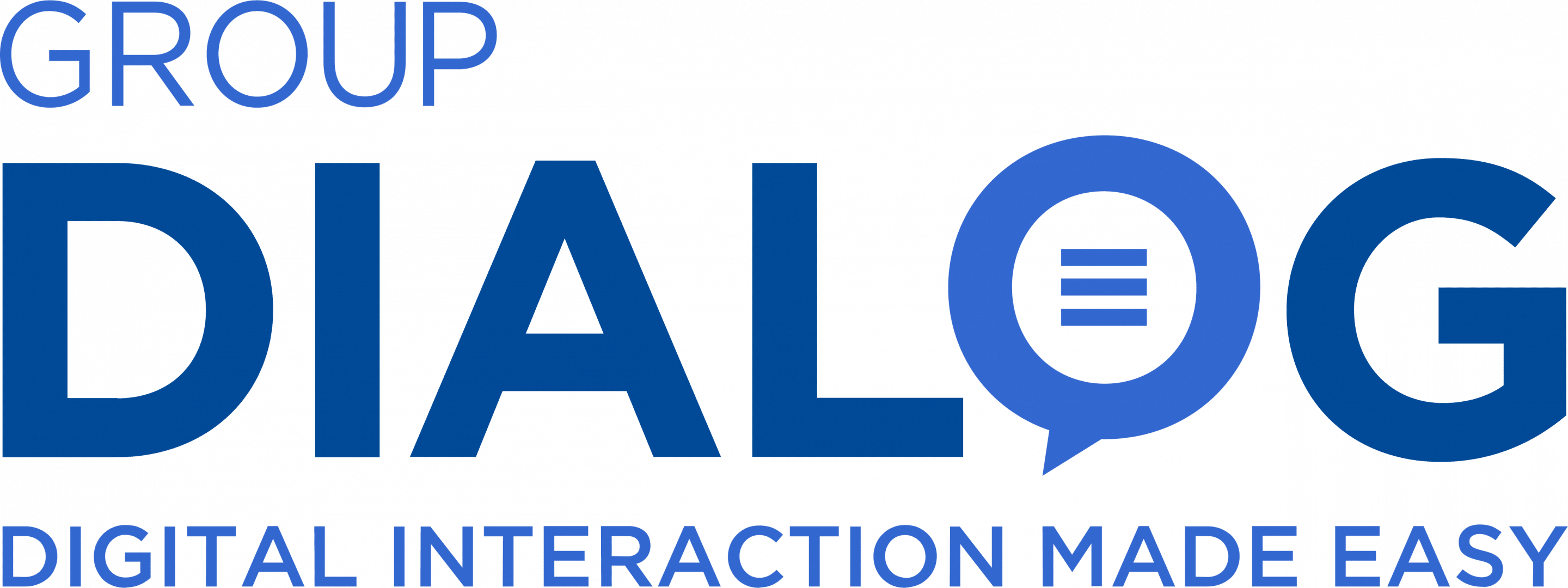Digital accessibility goes beyond a pdf
A person with an auditory disability will never become a satisfied customer if the only way to communicate with your organization is through the telephone. While a person with a visual impairment does not want to receive information from you through a video. But also persons without disabilities can encounter problems in contacting your organization. For example, a customer who does not own a smartphone but is dependent on your app.
Ultimately, it’s about ensuring that every customer, with or without disabilities, can contact your organization through their preferred channel.
Digital accessibility is not a functionality
Accessibility is not a functionality that is on or off. It is not black and white, but a shade of gray. No document or website can be 100% accessible to everyone, and no document is useful if it is not accessible to anyone. So your goal should be to provide the best shade of gray for your target audience. Is your target audience a bit older and do you know they are not digitally savvy? Then focus on paper communication, for example.

An omnichannel approach to digital accessibility
Suppose your customer wants to contact you, but is on the train and would rather not call. Then it’s nice for your customer if he can switch to a chatbot or form. But as soon as your customer gets off the train, he might be quicker to pick up the phone to get an answer to his question. This too has to do with digital accessibility.
Letting customers decide how to interact with your organization
Successful, profitable organizations let their customers decide how and when they want to receive information. Do customers want to receive information via a personalized video, a digital PDF/UA, a voice message or via a Whatsapp? By offering your customers multiple options, you ensure that there is something for everyone. And that makes your company (largely) accessible. Accessibility therefore requires an omnichannel customer contact strategy. Whether someone is disabled, young, old, digitally ill or digitally savvy.
For 3 in 100 people, navigating websites, reading a contribution in an email or requesting information is not obvious.
Digitally accessible communication tools
But… for 3 in 100 people, navigating websites, reading a contribution in an email, or requesting information is not obvious. They need adapted communication channels to be able to read or hear the information. You can think of deploying digitally accessible PDFs, one of the most commonly chosen means of communication for people with disabilities. But you can also think of other customer contact channels. Think of a personalized, interactive video with subtitles for people with a hearing impairment. Or a voice bot for people who are low-literate. Or enlarging the buttons in your app. There are various solutions and possibilities for making multiple customer contact channels accessible for people with disabilities.
Where to start?
Setting up an accessible omnichannel customer contact strategy is not something you do in one day. In fact, you probably won’t achieve it in a year. If you want to take quick steps in making your communication to customers accessible, you can start by using accessible PDFs. In an accessible pdf you can create important structures, such as reading order, headings and titles, meta information about images and table markers. But also adding voice elements. You don’t have to do all this manually, there are handy tools for that which we can tell you more about.
Self-service portals accessible?
But… pdf’s are increasingly shared through self-service portals because it is not allowed to share personally identifiable customer data in emails. A self-service portal is a good platform to share your accessible pdf’s with your customer and reduce the pressure on your customer service.
But is the self-service portal made accessible to every customer? This is not always the case and therefore you should try to meet the guidelines of the WCAG when you get started with a self-service portal (or website). Do you need advice? Then get in touch with us.
The WCAG: Web Content Accessibility Guidelines
The WCAG contains guidelines for web content accessibility aimed at people with disabilities. Following these guidelines will also make your web content more accessible for web browsers and devices with limited functionality such as cell phones.
Dutch governments and institutions in the public and semi-public sector are obliged to comply with digital accessibility. They must meet the requirements of WCAG 2.1, level A and AA. The private sector does not yet, although there is the Equal Treatment Act which states that the government and the private sector must make their goods and services as accessible as possible.
The WCAG focuses on four principles: perceivability, operability, understandability and robustness.
- aOBSERVABLE: people should be able to experience and use the website (and elements on the website) with the senses available to them.
- aUSEFUL: people should be able to find and use content on the website, regardless of how they use it.
- aUNDERSTANDABLE: There is a need to ensure that people and software can understand the content and understand how the website works.
- aROBUST: It must be ensured that the content can be reliably interpreted by a wide range of user agents.
The WCAG tries to get organizations to think about the different ways people interact with web content. For example, the ability to change default browser settings to make content more readable. Or that some people only use a keyboard instead of a mouse. The WCAG is regularly updated due to the rapid development of the web. We therefore recommend that you focus on the WCAG guidelines, among others, when you want to make your organization more digitally accessible.
Do you want to know how to create digitally accessible pdf’s and/or an accessible platform? Then please contact us.
MORE INSPIRATION
Find the right balance between efficiency, accessibility, and human contact in your channel strategy
A successful channel strategy requires a balance between efficiency, accessibility, and human contact. Excessive channel steering can lead to customer frustration and loss, while listening to customer needs and providing diverse channels enhances customer satisfaction and creates a positive brand experience.
The importance of the right Channel Strategy to best serve customers
A well thought out and effective channel strategy can make the difference between satisfied customers and customers going to competitors. Let's look at the importance of a proper channel strategy in serving your customers in the best way possible.
Aspire CEO Kaspar Roos on improving customer experience, managing digital transformation and the future of artificial intelligence
Kaspar is the CEO and founder of Aspire, a consulting firm specializing in Customer Communications Management and Customer Experience Management. Dialog Group and Kaspar have the same mission: to help companies with their digital transformation to improve the customer experience company-wide.



